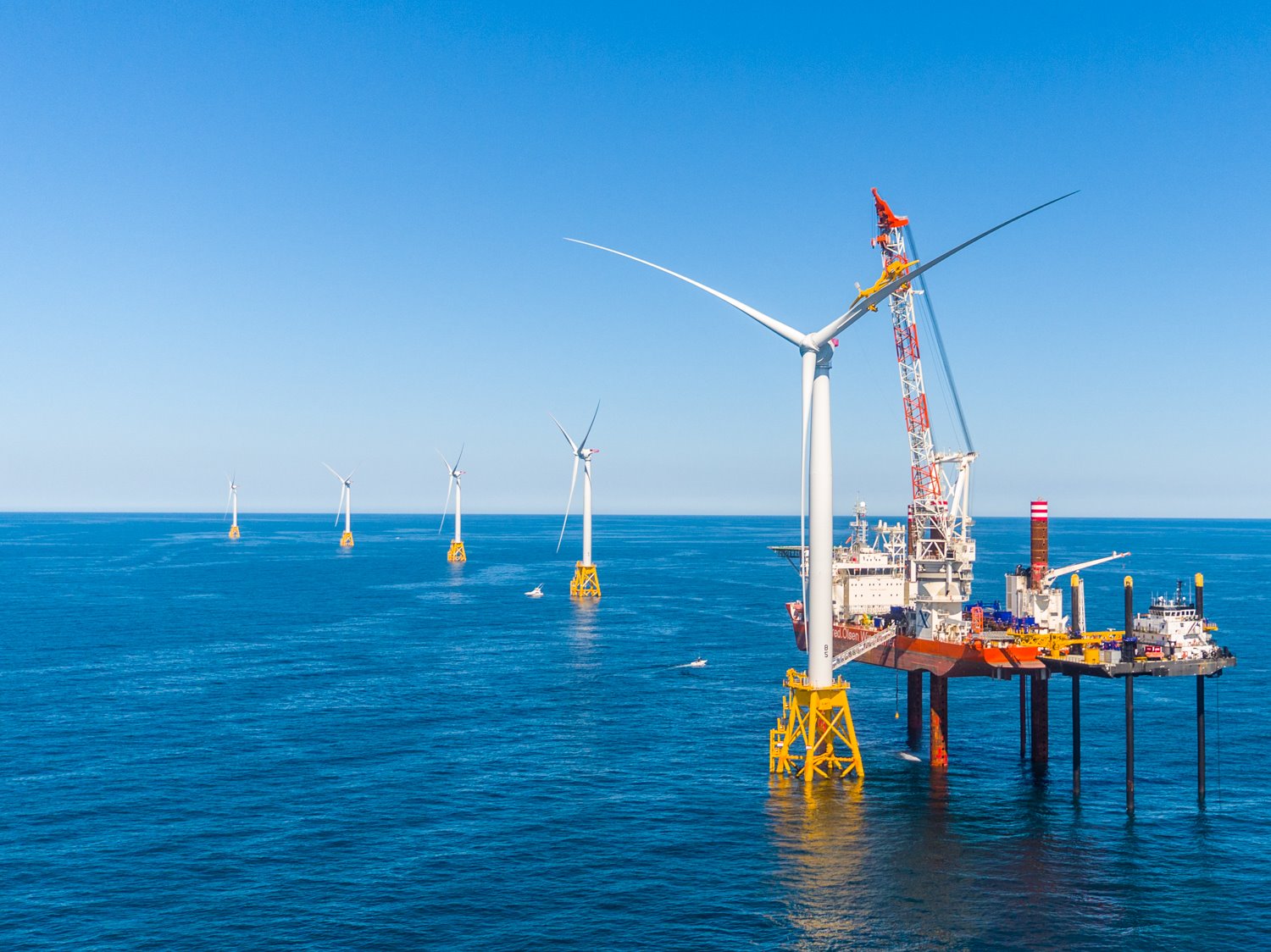New England turbine construction, offshore survey mark major milestones
The long-delayed start to offshore wind energy in U.S. waters passed two benchmarks in recent days: The completion of five turbines at the 30-megawatt Deepwater Wind LLC project in Rhode Island waters, and the start of survey work over the Danish Oil and Natural Gas (DONG Energy) federal lease site off Massachusetts.
Using the Fred Olsen Windcarrier 433’x138’ jackup vessel Brave Tern, workers by Aug. 18 assembled the last nacelles and rotors atop the Deepwater towers, situated 2.9 miles off Block Island.
Compared to decades of offshore wind development in Europe, the Block Island installation is tiny, capable of powering around 17,000 homes, and weeks of testing lie ahead before the $300 million project can begin turning power this fall. But the sight of the first industrial-scale turbines in the northwest Atlantic Ocean drew international news media notice.
Meanwhile, about 60 miles to the east and 15 miles south of Martha’s Vineyard, Mass., the 226’x46’x16’ Ocean Researcher is sounding DONG Energy’s 187,500-acre lease area it took on in late 2015.
The United Kingdom-flagged vessel showed up in New Bedford, Mass., in the first week of August, tying up at the port’s southern terminal, which has been renovated to the tune of $113 million in Massachusetts taxpayers’ money to support the offshore wind industry.
The terminal’s original anticipated customer – the troubled Cape Wind project proposed for Nantucket Sound – continues to struggle against political opposition, and the loss of its major power purchasers. DONG Energy’s lease area is over the horizon, and out of sight from beach resorts, but the company is still working with the region’s fishing industry to reduce conflicts.
Rhode Island state officials supporting the Deepwater Wind project see the potential for establishing their state, with its big marine terminal area at the former Quonset Point Navy base in North Kingston, as an onshore support hub for the nascent wind energy industry. Deepwater’s crew transfer vessel (CTV), the 70’6”x24’x4’ Atlantic Pioneer, built by Blount Boats in Warren, R.I., and operated by Atlantic Wind Transfers, received a lot of notice from other wind project developers.
Suppliers to the European offshore wind industry are paying close attention to developments in the U.S. market now. The Atlantic Pioneer is a licensed version of CTV design from the UK's South Boat IOW, where Aluminum Marine Consultants (AMC) is likewise looking to partner with U.S. shipbuilders.

A rendering of the ESNA Tern. AMC photo.
In August AMC announced it is adding a new surface effect ship (SES) to its portfolio for the wind market, designed by Espeland & Skomedal Naval Architects of Norway.
The ESNA Tern will be “a next generation high performance crew transfer vessel, offering turbine access in up to 2.5m (8’) significant wave height, with a maximum speed above 40 knots and greatly reduced speed loss in high seas,” according to the company. AMC’s commercial director Rob Stewart says it will “help innovate the crew transfer vessel market.”
The area between the vessel’s slender catamaran hulls is enclosed with flexible reinforced rubber in the bow and an inflated rubber bag at the stern. Centrifugal fans pressurize the space, providing an air cushion that lifts up to 80% of the vessel weight.
The system can lift the boat up and down by more than 6’– effectively cancelling that height in wave motion – an especially useful tactic in long swells, the company says. That step up in sea state performance could be useful to U.S. turbine operators, who will face daunting conditions much of the year in southern New England and Mid-Atlantic offshore waters.





